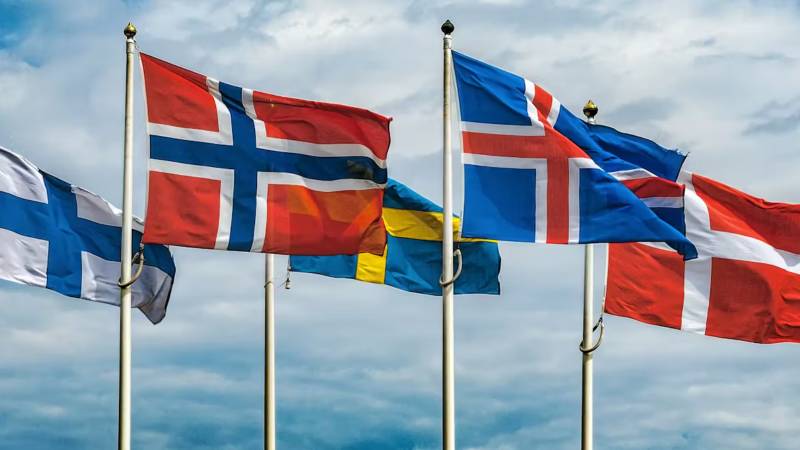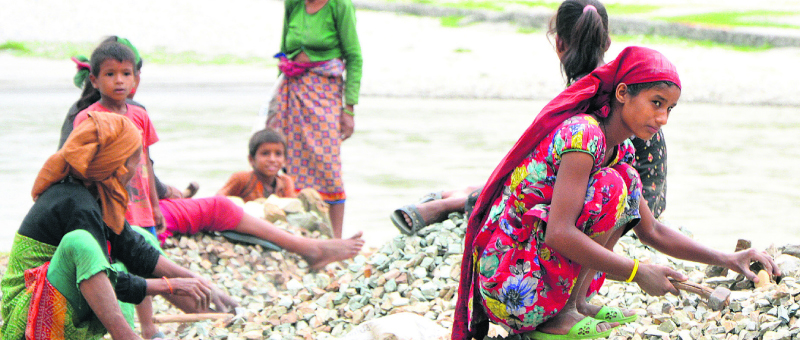Touring the beautiful city of Chicago one summer a while back, I met a Russian lady pursuing a PhD in Economics at the prestigious University of Chicago. Shortly while touring the city, we began sharing our mutual experiences in the USA and compared Russia, India, China, and European countries along with Scandinavian countries on political, social, and economic grounds. We both agreed the USA is an innovative, vibrant country leading the world in technology and business, but socially complex and diverse, just as India is—in fact, India more so (on language, ethnicity, caste, class, and religion)—along with massive poverty, a huge social challenge to reckon with. We debated which countries were the fairest societies of all. We ruled out the USA, China, Russia, and India—due to lack of social justice, restricted liberty in Russia and China, poverty in India, and social inequality, crime, and gun violence in the USA. She rightly suggested that in terms of social fairness, democracy, economy, or crime control, we must look at Finland, Norway, and Sweden as good societies with the most favorable indices on social and economic equality.
These Scandinavian countries are often associated with a social democratic model, referred to as "Scandinavian socialism," but they actually are capitalist economies with broad welfare systems. They utilize free market principles to generate the wealth that funds their robust social safety nets with fairer distribution, yet they are competitive capitalist economic structures with strong labor unions combined with social programs helping the needy. The free market principles generate the wealth that enables them to fund their robust social safety nets.
Democratic socialism combines features of political democracy (free and fair competitive elections) with social ownership of the means of production, emphasizing economic democracy/freedom and workers' rights with strong unions. It also advocates a fundamental shift from capitalism toward socialistic economic features, while remaining committed to democratic processes. It can be seen as merging the two distinct systems yet keeping them both side by side.
In the paper The Nordic Model and Income Equality: Myths, Facts, and Policy Lessons, authors Magne Mogstad, Kjell G. Salvanes, and Gaute Torsvik posit that the Nordic countries have developed a social and economic model that combines prosperity with equality.
Four key pillars of the Nordic model are cited in this paper: (1) substantial public investment in essential services, (2) influential labour unions, (3) high public expenditure on social insurance, and (4) high and progressive taxation.
Equality in hourly wages, linked to high union wage bargaining, is the main reason for lower earnings inequality in the Nordics. An attractive feature of the Nordic countries is their ability to combine strong economic performance with reduced levels of inequality compared to the American model. The Economist in 2013 described the Nordic approach to economic organization as “the next super-model.” In this paper (Mogstad et al., 2025), the authors investigate why these countries maintain low inequality and consider what lessons can be drawn for other economies.
The four pillars of the Nordic model:
1. Substantial public investment in family policies, education, and health services, ensuring broad access to essential services.
Innovative take on gender equality

2. Influential labour unions with coordinated wage-setting across industries.
3. High public expenditure on social insurance systems that protect individuals against income losses due to unemployment, disability, and illness.
4. High and progressive taxation of labor income, combined with subsidies for services that foster employment.
More equal pre-distribution of labor earnings—pretax labor wages and income—rather than income redistribution, is the attributed reason for lower income inequality in the Nordic countries compared to the US and the UK. Equal distribution of hours worked, less variation as a result of compression, and equity in hourly wages lead to lesser variation in overall income.
Wage compression within gender, rather than between men and women, explains why the Nordic countries have a fairer hourly wage distribution than the US and the UK. Nordics focus on gender equality in income, and the within-gender component is a far more significant factor. The gender wage gap is about 30% lower in the Nordics than in the US, with less than a 2% difference in reported wage dispersion between the regions.
While capitalism and socialism are often presented as opposing economic systems, in reality, the economies of most countries exist on a spectrum incorporating elements of both. No economy is purely capitalist or socialist. Rather, most feature markets and social welfare systems tailored to meet the unique needs, cultural values, and historical contexts of their societies. This article provides an overview of both systems, including their definitions, history, key principles, and real-world examples.
Key Takeaways:
* The capitalist economic model relies on free market conditions for the creation of wealth. The production of goods and services is based on supply and demand in the general market.
* In a socialist economic model, the production of goods and services is either partially or fully regulated by the government. This is referred to as central planning, and the economic structure created is known as a planned economy or a command economy.
* Most countries are mixed economies, falling somewhere on the spectrum between pure capitalism and pure socialism.
Capitalism
Capitalism is an economic system based on the private ownership of the means of production (i.e., factories, offices, tools, and equipment) and their operation for profit. Central characteristics of capitalism include private property, capital accumulation, wage labor, voluntary exchange, and a price system derived from competitive markets.
In capitalism, decision-making and investments are determined by the owners of capital (i.e., wealth, property, and production capacity), whereas prices and the distribution of goods and services are mainly determined by competition in markets.
Fundamental principles of capitalism:
* Business owners control the means of production and hire labor, who are wage earners.
* Private property rights.
* Competitive markets and product/service quality.
* Minimal government intervention in the economy.
Under capitalism, the prices and production of goods and services are determined by the voluntary interactions of individuals and companies in the marketplace. Capitalists argue this free market mechanism leads to the most efficient allocation of resources and quality products. The strongest capitalist economies—USA, Japan, and Germany—offer the most competitive quality products so far.
The present global trend is that nearly all modified economies are free market-driven capitalist economies: China, India, and all successful Southeast Asian nations included. The key is to focus on revenue generation; without it, there is nothing to distribute. Governance must care for the poor, disabled, older, and younger generations (health and education, for example). We agreed it’s more challenging in ethnically, socially, and religiously divided larger nations compared to smaller, homogeneous Nordic nations. Lastly, one must create revenues before redistribution. An empty pocket has nothing to give—the key lesson here! Revenue generation always comes first before you have the ability to share it.
The interesting interaction and debate ended at the picturesque Lakeshore corner overlooking the waves of Lake Michigan, with a feeling of being on the ocean in North Chicago. Surrounded by beautiful tall buildings designed by the late famous architect Frank Lloyd Wright, the city’s charm was a huge plus. We parted with a note that our conversation was humane, diverse, and interesting, and we were solving global issues with so much fun. What if world leaders could sit down here and come to terms with equality and prosperity, with peace and harmony for all on the planet? This lively thought was the “icing on the cake,” we felt!








_20210926115209.jpg)




























